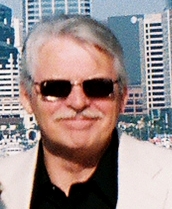 NOTE: The following article was recently published for Reason magazine. While there are several comments, which we agree with, I am saddened to say that this author has been greatly misdirected by the American Cancer Society and the National Institute for Health. It is only too typical of the Common Enemy to mislead, misdirect and post outright lies to the American public – all in the guise of being “politically correct” – and this writer is only being used as a tool.
NOTE: The following article was recently published for Reason magazine. While there are several comments, which we agree with, I am saddened to say that this author has been greatly misdirected by the American Cancer Society and the National Institute for Health. It is only too typical of the Common Enemy to mislead, misdirect and post outright lies to the American public – all in the guise of being “politically correct” – and this writer is only being used as a tool.
At the bottom of this page, please read Dr. Kelley’s response to the nonsense being perpetrated. (Ed.)
 What Cancer Epidemic?
What Cancer Epidemic?
Ever since the publication of Rachel Carson’s Silent Spring in 1962, one of the staples of environmentalist dogma has been that industrial chemicals and pesticides are causing an epidemic of human cancers. “What…is driving the modern cancer epidemic?” asks environmental activist Samuel Epstein in the November 2001 issue of Tikkun. “Study after study points to the role of runaway industrial technologies… producing a dizzying array of synthetic chemicals that have never been screened for human health effects.” Worldwatch Institute founder Lester Brown concurs, noting, “Every human being harbors in his or her body about 500 synthetic chemicals that were nonexistent before 1920.”
“Cancer is reaching epidemic proportions and we need to identify the links between the public health crisis and the environment,” declared Priscilla Rosenwald of the Pennsylvania Women’s Health and Environment Network during a breast cancer conference in 1997. Such claims are often accompanied by pleas for massively expensive regulations that would require removing even the smallest traces of synthetic chemicals from the environment.
But are we in the midst of a rising cancer epidemic? No, according to Cancers Facts and Figures 2001, issued earlier this year by the American Cancer Society (ACS).
“Overall cancer incidence and death rates have continued to decrease in men and women since the early 1990s, and the decline in overall cancer mortality has been greater in recent years,” concludes the ACS report. The National Cancer Institute (NCI) annual report for 2000 also found that “the number of new cancer cases per 100,000 persons per year-for all cancers combined declined on average 0.8 percent per year between 1990 and 1997.” In fact, the incidence of cancer has declined by 1.3 percent per year since 1992, according to the NCI.
A lot of furor over cancer rates can be traced to the seemingly dramatic increases in breast and prostate cancer during the 1980s. “The apparent increases in the incidence of breast and prostate cancer are mostly due to increased screening,” according to Mary Beth Hill-Harmon, an epidemiologist with the American Cancer Society. In other words, doctors got better at detecting breast and prostate cancers earlier, so this artificially pumped up their numbers temporarily.
For example, with the advent of the prostate specific antigen test (PSA test), prostate cancer rates increased an astonishing 17.5 percent year between 1988 and 1992. Since extensive PSA testing has uncovered a lot of early-stage cancers, the rate of incidence fell by 10.3 percent per year from 1992 through 1995, and has been flat since then.
Similarly breast cancer incidence rates jumped from 1 percent increases per year between 1979 to 1982 to 4 percent increases per year between 1982 and 1987 (they’ve been largely constant since 1987). Again, the apparent increases are a result of more vigorous mammography screening efforts.
So in recent years, actual cases of cancer are declining. How many people die of the disease? In 2001, the ACS estimates that cancer will strike 1,280,000 Americans and that it will kill 553,400 people. Cancer is second only to heart disease as a cause of death, accounting for 23.2 percent of all U.S. deaths in 1998. However, overall cancer death rates also declined by 0.6 percent per year between 1991 and 1995.
Breast cancer death rates dropped 2.2 percent per year between 1990 and 1997. Colon and rectal cancer death rates have been decreasing 1.8 percent per year since 1984. Lung cancer death rates dropped among men by 1.7 percent per year between 1990 and 1997, and prostate cancer rates decreased by 4.4 percent annually between 1994 and 1997. The five-year survival rate for all cancers combined is now 60 percent. These improvements in cancer death rates are largely a result of earlier detection (when the disease is more easily treated) and the development of more effective therapies.
No rising cancer epidemic then. But perhaps the declines in cancer rates are a result of regulatory efforts to rein in industrial chemicals? That’s unlikely, since very few cancers are caused by synthetic chemicals in the first place. Sir Richard Doll, head of the Clinical Trial Service & Epidemiological Studies Unit in Britain, estimates that only 1 to 5 percent of cancers can be attributed to pollution. The American Institute for Cancer Research also concluded, “There is no convincing evidence that eating foods containing trace amounts of chemicals such as fertilizers, pesticides, herbicides and drugs used on farm animals changes cancer risk. Exposure to all manufactured chemicals in air, water, soil and food is believed to cause less than 1% of all cancers.”
So what does cause cancer? According to Doll, smoking tobacco causes about 30 percent of cancer; diet–especially consumption of animal fat–is responsible for between 20 percent and 50 percent; infections are responsible for between 10 percent and 20 percent; and natural reproductive hormones account for 10 percent to 20 percent. A good portion of the decreases in both cancer incidence and death rates in the U.S. can be attributed to sharp declines in the number of smokers.
That’s all good news, of course, even if it does burst the bubbles of the Lester Browns of the world and undercuts their demands for the removal of trace amounts of synthetic chemicals from the environment.
Here’s some bad news: While there is no epidemic of cancer, further reductions in the cancer incidence rate in the U.S. depend upon getting people to improve their diets and to stop smoking. That’s no easy task, for sure.
Ronald Bailey is REASON’s science correspondent.
CounterPerspective!
At the beginning of the last Century, it was estimated that one in 8,000 would be diagnosed with cancer in their lifetime. In 1971, President Nixon’s “War on Cancer” promised that cancer death rates would be cut in half by 2000. Three decades later, the disease now reaches 1 in 3 women and 1 in 2 men. It is a fact that the cancer rate has escalated since the introduction of anti-biotics into our society. I call this the greatest cover-up ever conceived. This is epidemic – and – so much for politics! As for winning a war, we must first step back, rethink our battle plan – and then set out to win!

Over the last half-century, the medical profession and the medical community have progressed to unprecedented heights and achievements in areas of reconstructive and surgical procedures, infectious and traumatic cases. They have worked hard and deserve every bit of the respect and honor they receive. In short – what the medical community has done – it has done well – unsurpassed in the history of mankind. But the problems for which the medical community is so well trained and equipped to handle – account for only a percentage of the illnesses in our society. In the balance of the cases involving degeneration or metabolic conditions – little hope is offered or received.
Instead of educating the public on how our bodies function best, the Medical Community – with the blessing of the political community – has been derailed by researchers caught up in a minutiae. While there is a vital role for cancer research and treatments – they each have ignored cancer causes altogether and focused on powerful drugs, radiation beams and surgery – all the while ignoring the factors which cause cancer – a deadly mistake!
William D. Kelley, D.D.S, M.S., author
Victory Over Cancer: Without Surgery, Chemotherapy or Radiation
Written by Ronald Bailey for Reason magazine, and published on DrKelley.info, March 14, 2001. Embedded links may no longer be active (Ed. 12.29.10)
FAIR USE NOTICE: This site contains copyrighted material the use of which has not always been specifically authorized by the copyright owner. We are making such material available in our efforts to advance understanding of environmental, political, human rights, economic, democracy, scientific, and social justice issues, etc. We believe this constitutes a ‘fair use’ of any such copyrighted material as provided for in section 107 of the US Copyright Law. In accordance with Title 17 U.S.C. Section 107, the material on this site is distributed without profit to those who have expressed a prior interest in receiving the included information for research and educational purposes. For more information go to: http://www.law.cornell.edu/uscode/17/107.shtml
